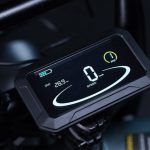Deep Cycle Battery Amp Hours Explained
Deep Cycle Battery Amp Hours Explained: Understanding the Basics and Beyond
When it comes to renewable energy systems, marine applications, or even RV power solutions, deep cycle batteries play a crucial role. However, understanding the concept of amp hours (Ah) is essential to maximizing their usage and efficiency. In this blog post, we will delve into the intricacies of amp hours in deep cycle batteries, offering insights into how they work, why they matter, and how to choose the right battery for your needs.
What Are Deep Cycle Batteries?
Deep cycle batteries are specially designed to provide sustained power over a prolonged period. Unlike conventional car batteries that deliver a short burst of energy to start an engine, deep cycle batteries can be discharged and recharged repeatedly without significant loss of capacity. This makes them ideal for applications where steady and reliable power is essential.
Understanding Amp Hours (Ah)
Amp hours, abbreviated as Ah, is a unit of measurement that indicates a battery’s capacity to deliver a specific current for a designated period. For instance, a battery rated at 100Ah can theoretically provide 1 amp of current for 100 hours or 10 amps for 10 hours. However, real-world conditions such as temperature and discharge rates can influence these figures.
The Importance of Amp Hours in Battery Selection
When selecting a deep cycle battery, understanding its amp hour rating is crucial. This metric helps determine how long a battery can power your device or system before needing a recharge. For example, if your application requires 20 amps, a 100Ah battery should last approximately 5 hours before depleting.
Calculating Amp Hours: A Practical Approach
To calculate the amp hours required for your application, consider the following steps:
Step 1: Determine Power Requirements
Identify the total power consumption of your devices in watts. This information is typically available in the product specifications.
Step 2: Convert Watts to Amps
Use the formula: Amps = Watts / Volts. For instance, if your appliances consume 240 watts at 12 volts, the current draw is 20 amps.
Step 3: Calculate Amp Hours
Divide the total amp requirement by the intended hours of use. Continuing the previous example, for 5 hours of operation, you would need a battery with at least 100Ah capacity (20 amps x 5 hours).
Factors Affecting Battery Performance
Several factors can impact the performance and lifespan of a deep cycle battery. Understanding these elements will help optimize battery usage:
Temperature
Extreme temperatures, both hot and cold, can reduce battery efficiency and lifespan. Manufacturers often provide performance data for different temperature ranges, so it’s advisable to consider your operating environment when choosing a battery.
Depth of Discharge (DoD)
Deep cycle batteries are rated for a certain number of discharge cycles based on their depth of discharge. A higher DoD can shorten battery life. For instance, a battery discharged to 50% will last longer than one consistently discharged to 80%.
Charge Rates
Proper charging is critical for maintaining battery health. Overcharging or undercharging can lead to reduced capacity and lifespan. Using a smart charger that adjusts the charge rate based on battery needs can mitigate such issues.
Choosing the Right Deep Cycle Battery
Selecting the appropriate deep cycle battery involves evaluating several factors:
Type of Battery
Common types include flooded lead-acid, AGM (Absorbent Glass Mat), and lithium-ion. Each has its pros and cons in terms of cost, maintenance, and performance. For instance, lithium-ion batteries typically offer higher efficiency and longer lifespans but at a higher initial cost.
Application Requirements
Consider the specific needs of your application. For instance, marine environments may benefit from AGM batteries due to their resistance to vibration and spillage, while solar installations might favor lithium-ion for their efficiency and compact size.
Budget
While it might be tempting to opt for a cheaper battery, investing in a higher-quality option can offer better performance and longevity, ultimately proving more cost-effective in the long run.
Real-World Examples and Considerations
Let’s look at a practical example to illustrate these concepts:
Consider an off-grid cabin using solar panels to charge a battery bank. If the daily energy consumption is 2000 watt-hours and the system voltage is 12 volts, the required amp hours are approximately 167Ah (2000 watts / 12 volts). Factoring in a typical inefficiency of 20%, a battery bank of around 200Ah would be advisable.
For enhanced reliability, especially in cloudy conditions, it’s prudent to increase this capacity by 20-30%, leading to a total of 240-260Ah. Choosing AGM or lithium-ion batteries would provide better performance in cold conditions often experienced in off-grid locations.
Conclusion: Maximizing the Lifespan of Your Deep Cycle Battery
Understanding amp hours and how they apply to deep cycle batteries is crucial for selecting and maintaining a power system that meets your energy needs. By considering factors such as temperature, depth of discharge, and application requirements, you can optimize battery performance and extend its lifespan.
Always consult with battery specialists and refer to manufacturer guidelines to ensure you’re making informed decisions. With the right knowledge and approach, your deep cycle battery can deliver reliable power for years to come, whether you’re sailing the high seas, exploring remote landscapes in an RV, or living sustainably off-grid.

Leave a Reply